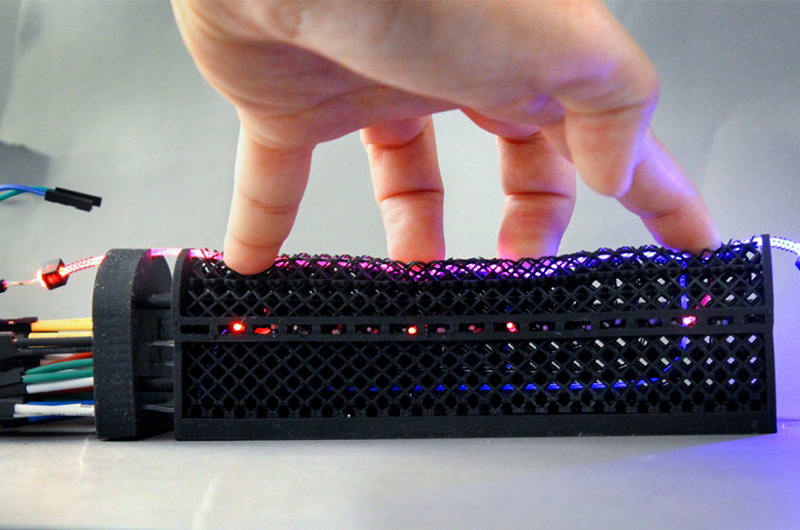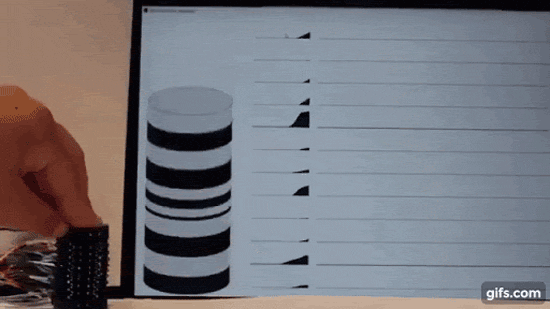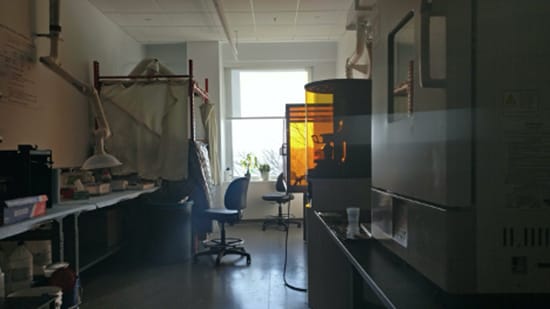
Carbon® University Program:
How Cornell is Leveraging Carbon DLS 3D Printing for Robotics Applications
By Dr. Robert F. Shepherd, Associate Professor, Cornell Sibley School of Mechanical and Aerospace Engineering


“Material science is a doorway to better robots.”
Dr. Robert F. Shepherd
Introduction
At Cornell, we are using the Carbon Digital Light Synthesis™ (Carbon DLS™) 3D printing process for two purposes:
- Printing frameworks and enclosures for robotics, smart wearables, and other human-machine interfaces.
- Printing the machinery itself, including new compliant (flexible) mechanisms that currently do not exist.
These components operate like hinges that either move pneumatically (from pressurized air) or mechanically (by strings pulled by small motors). While it could seem simple, compliant mechanisms allow for co-integration of multiple subsystems into tighter architectures. By creating a tight coupling between, e.g., power, actuation, and sensing subsystems, this creates a multi-functional region that allows for the robot to meet real-time requirements in a dynamic environment, such as catching an object. This multi-functional integration is pervasive in biology and is now possible using additive manufacturing for compliant mechanisms.

Research Challenge
In order to achieve this multi-functional integration, we needed a 3D printing process that produced reliable reproductions of our CAD models with high resolution, and that offered high strain-to-failure materials with relatively low elastic moduli (highly flexible). While digital light processing (DLP) seemed to be the right choice to satisfy the former, the material selection in these systems was poor. We had been using custom built DLPs with some commercial resins as well as our own, but were still not satisfied with the results.
Solution
“High-quality 3D printing materials.”
In search of higher-quality 3D printing materials, I discovered Carbon after reading about continuous liquid interface production in Science magazine (2015) and watching the TED talk with Co-Founder Dr. Joe DeSimone. We found that Carbon’s SIL, RPU, FPU, EPU, and CE materials are excellent choices for most of our applications (Figure 2).

In our research, our goal is to ride the line between advanced materials and robotics. We contribute to the materials selections, mostly with nanoparticle-based additive resins, but also are very happy to apply cutting-edge commercial options for new robotics applications. Carbon’s SIL 30 material provides high-resolution printing of tough and low elastic modulus materials that we have used for the membranes of electrostatic actuators. We’ve used the higher modulus EPU 40 material for dialing in the right “feeling” of stretchable optoelectronic human-machine interfaces. The CE 221 material has become a good choice for hard components in one of our digging robots.
A Fast, Reliable, and Easy-to-Use 3D Printing Process
The reliability of Carbon printers and the extensive material selection are the primary reasons we are using the Carbon DLS 3D printing process. However, the rapid and easy-to-use nature of the process is also important. My students can spend more time designing and testing, rather than repairing equipment. Once we get used to that, I don’t want to reduce my research output by maintaining equipment, and my students don’t want to either.
“I get the sense that there would be insurrection if I switched 3D printing equipment.”
Whenever there is a new software release or material option available from Carbon, the excitement from my students is clear, based on the back-and-forth Slack chatter. They like finding new applications for the Carbon DLS process, or applying it to solve existing challenges.

Conclusion
We look forward to more tough materials with even lower moduli to create more natural feeling human-machine interfaces. The ability to use grayscale printing for varying mechanical properties within a single print will also be useful for creating structural and machine elements (e.g., living hinges) within the same prints.
3D as It’s Meant to Be
To learn more about Dr. Shepherd’s work at Cornell and how his group is leveraging the Carbon DLS process, watch his Ted Talk, ‘Why Robots Must Be Grown, Not Assembled.’
Interested in using the Carbon DLS process for your research efforts? Reach out to us at sales@carbon3d.com to learn more about the Carbon® University Program.
